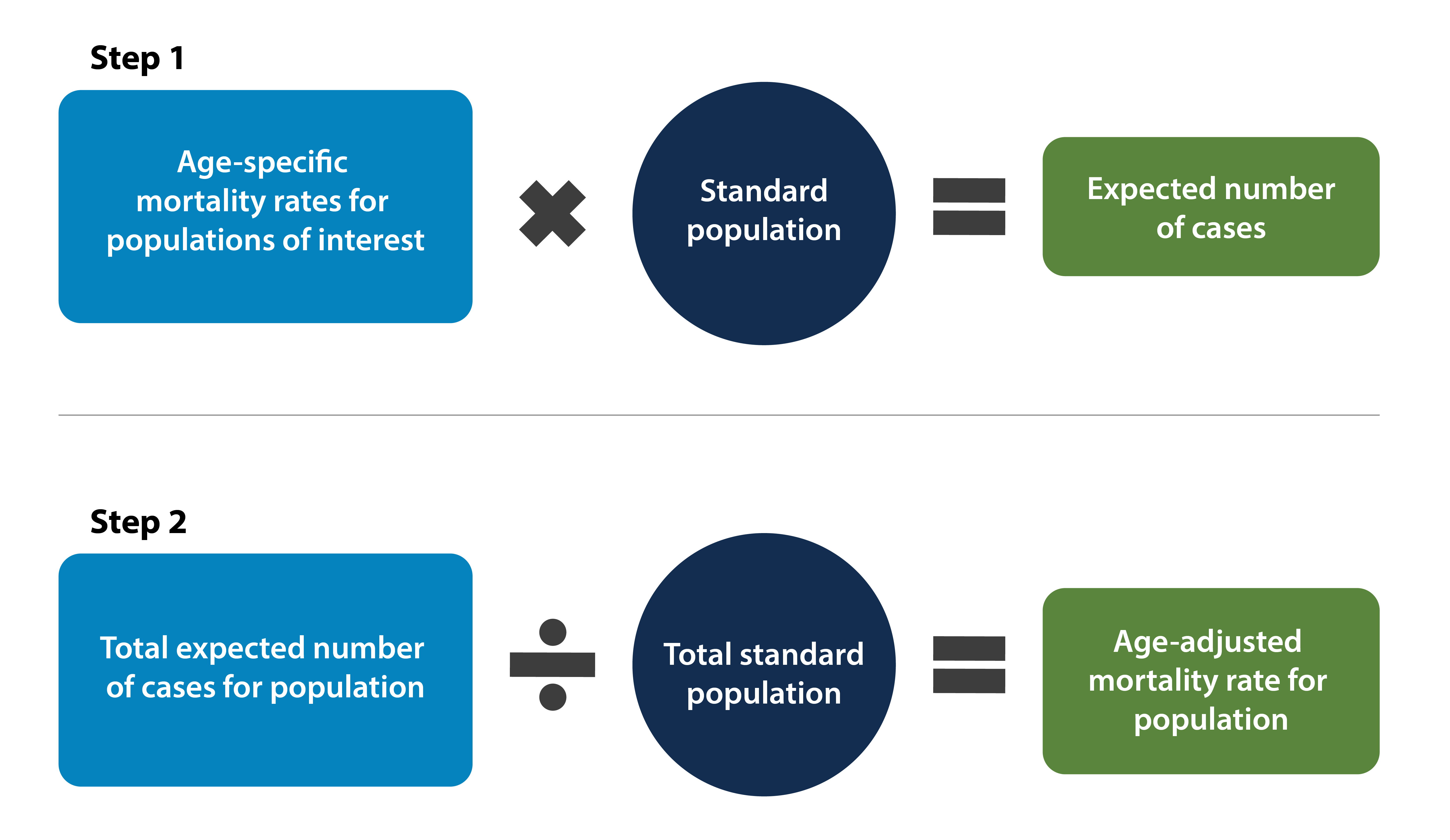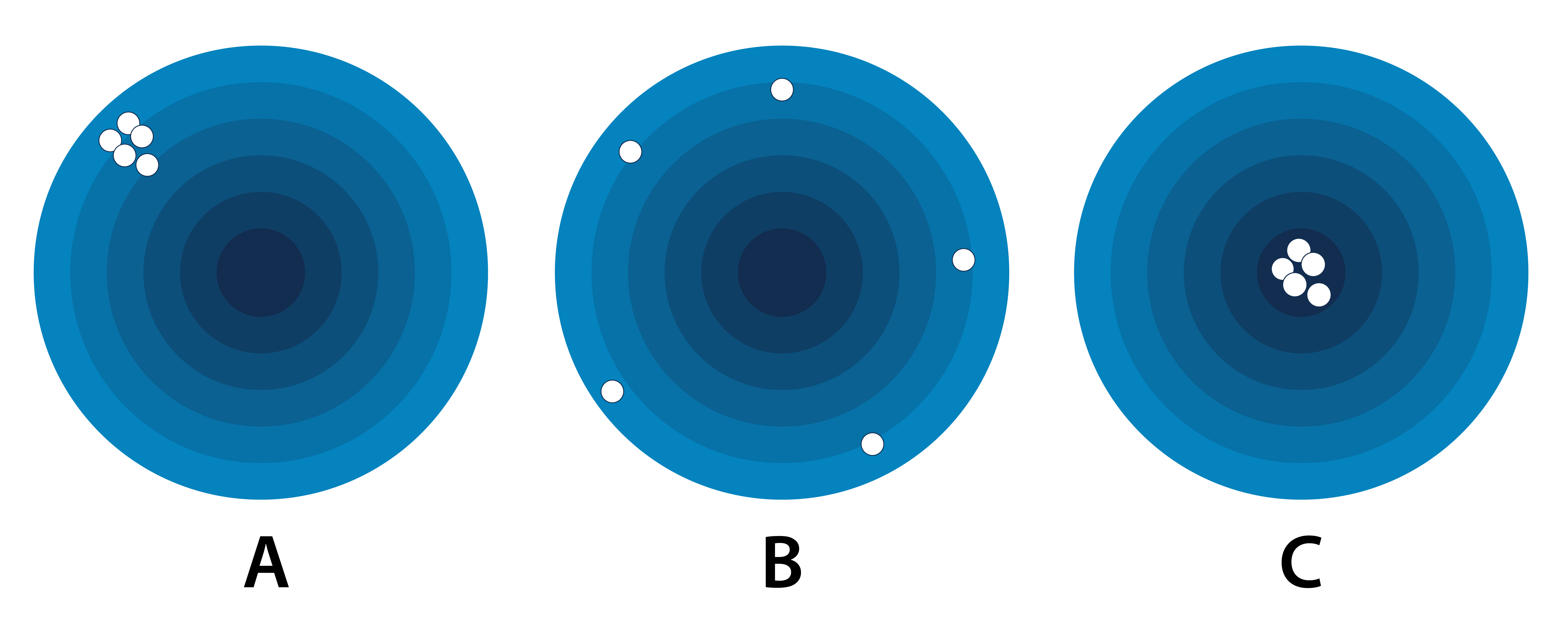2. Common Terms and Equations
Knowledge Check
Exercises
Now it’s time to see what you learned! You can check your answers to each question by clicking the Show Answer button, and then move on to the next section.
- An estimate calculated from a sample size greater than 100 is exactly equal to the true value in the population of interest. True or false?
- Increasing the sample size can result in a more precise estimate of a population parameter. True or false?
- Age-adjusted rates reflect the true risk of disease within a community. True or false?
- A measure’s validity refers to its:
- For 1999–2020, the crude death rates for Arizona and Alaska are 1,020 per 100,000 population and 707.1 per 100,000 population respectively.1 Individuals in which state face a greater risk of death?
- In a study on the effects of coffee drinking on cardiovascular health, it was found that drinking coffee was associated with a greater risk for heart disease. Upon further analysis, researchers discovered that a large majority of coffee drinkers were smokers, and that smoking status was the true cause of the apparent association.
Select the answer choice which best identifies the role each variable played in the study:
1. "Underlying Cause of Death, 1999-2020." CDC WONDER, https://wonder.cdc.gov/ucd-icd10.html.
2. Naing, N N. "Easy way to learn standardization : direct and indirect methods." The Malaysian journal of medical sciences : MJMS vol. 7,1 (2000): 10-5. https://www.ncbi.nlm.nih.gov/pmc/articles/PMC3406211/

